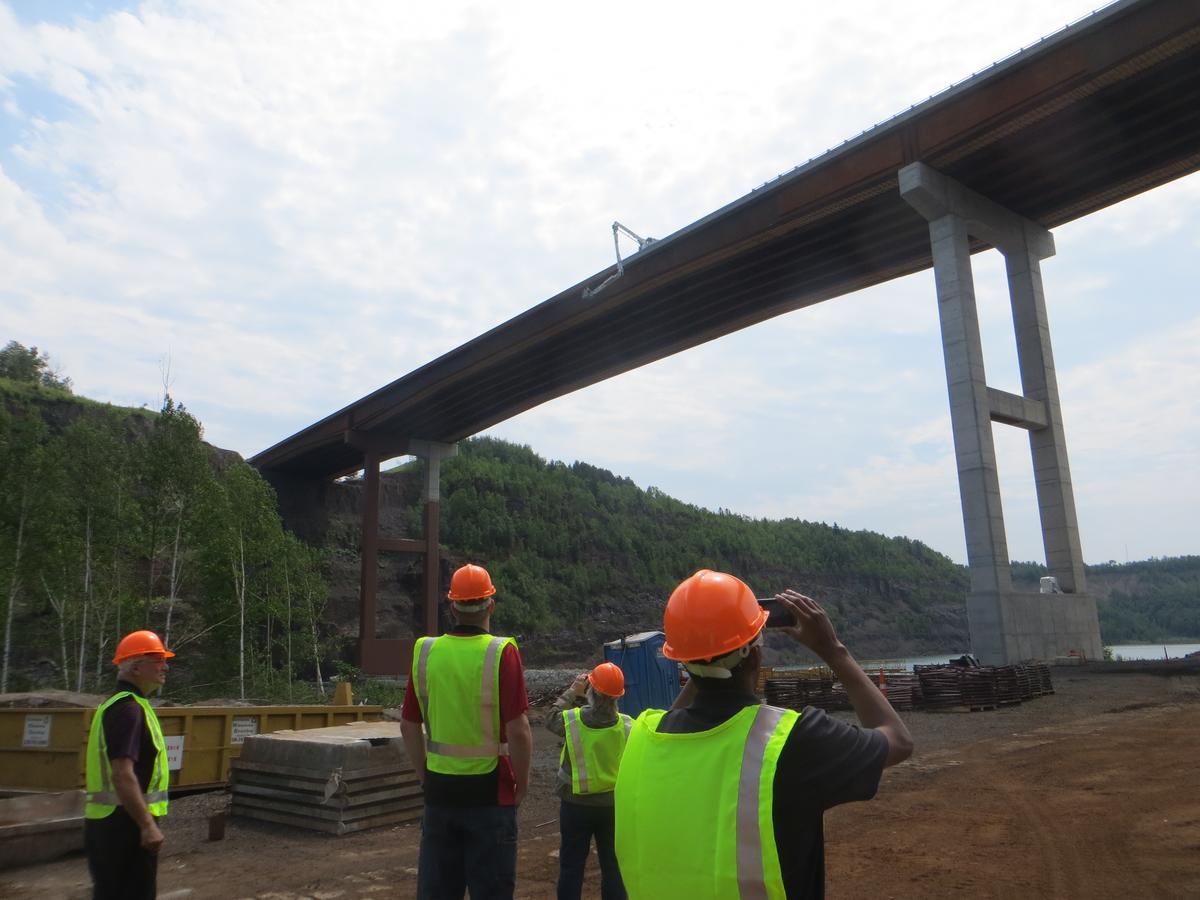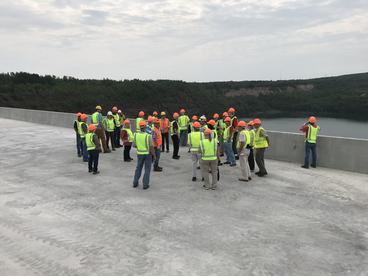Most of us don’t have to pay attention to the details of moving stuff. But transport by trains, planes, trucks and ships is a juncture that bumps against everything else – natural resources, waste management, climate resiliency, materials and the environment
In July, NRRI partnered with the Minnesota Department of Transportation and the Center for Economic Development to host a summer workshop that spanned the breadth of challenges and opportunities facing intermodal logistics. The event was held against a backdrop of the great Port of Duluth-Superior, by far the largest and busiest port on the Great Lakes. This freshwater resource connects the heartland of the U.S. and Canada to the rest of the world, with nearly 900 vessel visits each year. [More]
This is the first time this national workshop was held in Duluth. It was sponsored by the Transportation Research Board’s Committee on Resource Conservation and Recovery and three other Board committees. NRRI Senior Researcher Larry Zanko was in Washington, D.C., in 2016 when the workshop location was being decided.
“And I raised my hand,” he said. “I knew that their focus on resource conservation and recovery overlapped with what we do here at NRRI. Our connections with MnDOT, the University of Minnesota, the Port Authority and agencies would tie everything together.”
About 140 people from across the U.S. (including one from Japan) from a variety of disciplines attended, spoke and networked. Those who had never been to Duluth were impressed by the extensive transportation hub, restoration efforts underway, natural resources and sustainability efforts.
And everyone’s knowledge was stretched.
“We learned how integral the Soo Locks are to our Great Lakes transportation systems and the U.S. economy,” said Zanko, pointing out examples, “and what California is doing with high speed rail, and how Delta is addressing sustainability. The topics generated exciting discussions.”
Graduate and undergraduate students in the University of Minnesota Duluth’s Civil Engineering program also presented research ranging from pavement materials to bike sharing.
“Bringing people together, sharing innovations, looking to the future… that’s the role of NRRI,” said Rolf Weberg, NRRI Executive Director. “As the population grows and natural resources become more stressed, sustainable solutions – the topic of this workshop – is critical and timely.”
Importantly, the workshop brought together a diverse group of people with time to interact over three days to share their experiences and approaches to solving common problems.
“I also heard that the workshop and events managed to convert introverts to extroverts…at least for a couple of days,” Zanko added with a laugh.
Highlights from the Duluth workshop will be captured to help the Committee plan the 2018 event in Seattle, Wash.

